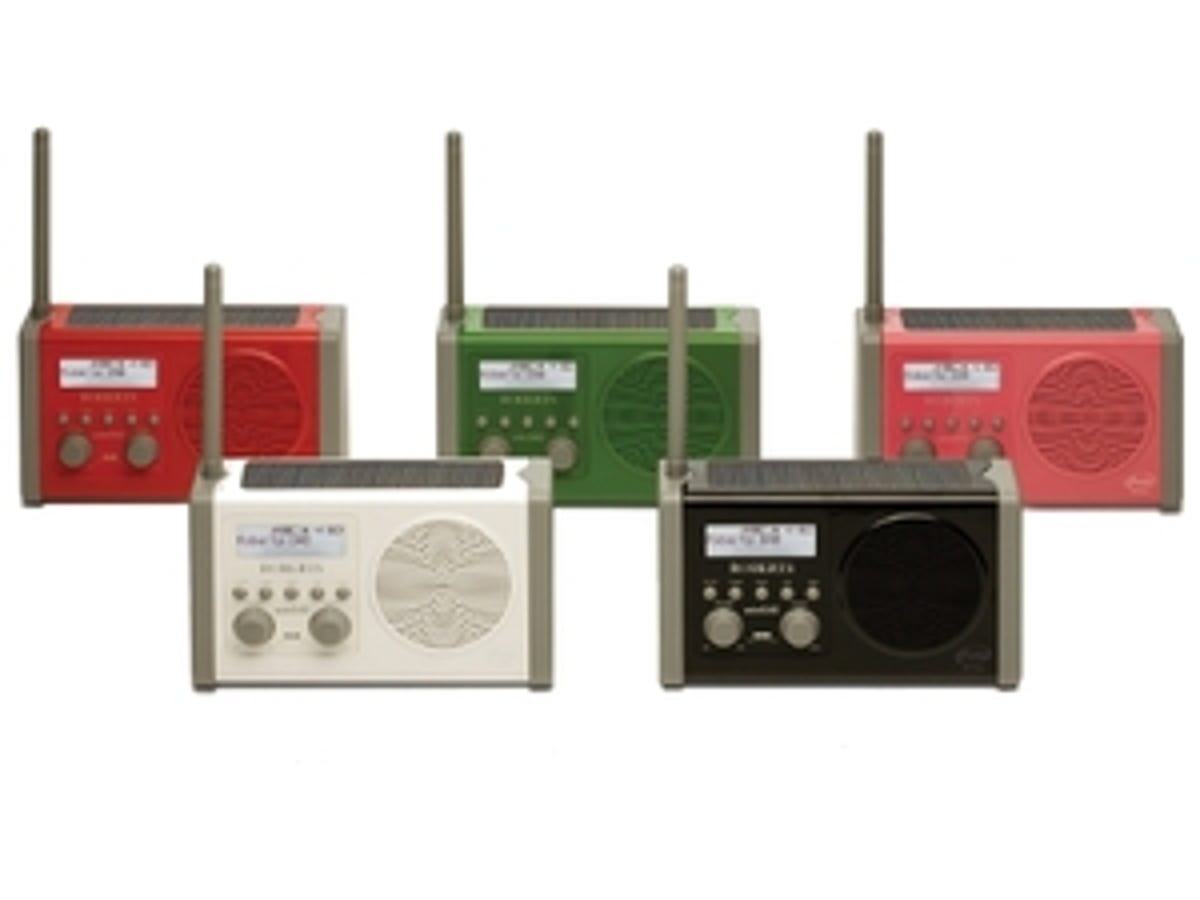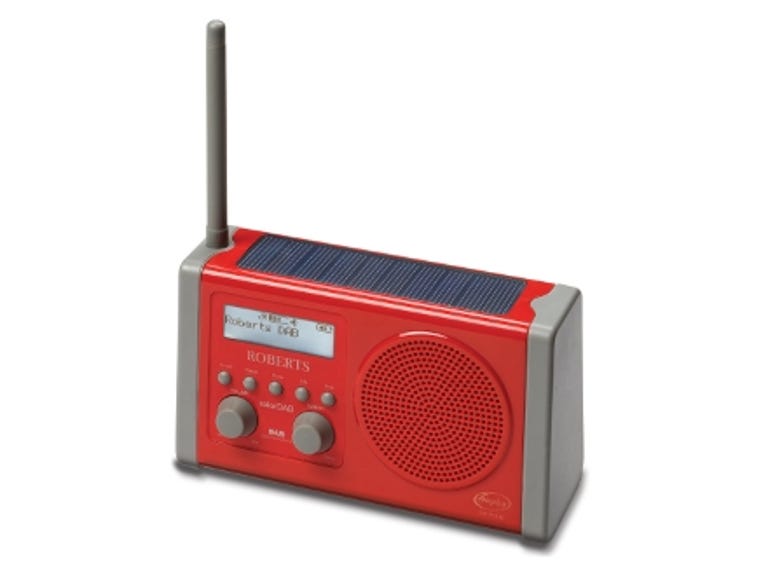 Why You Can Trust CNET
Why You Can Trust CNET Roberts solarDAB review: Roberts solarDAB
For gardeners, travellers and those of an eco-friendly bent, the sun-powered solarDAB radio is a great option. Although it lacks an FM tuner, its small dimensions and low weight mean it's highly portable, and its fully charged battery will provide up to 27 hours of listening time
No radio is more aptly named. Capped by a chunky solar cell and with a rechargeable battery under the hood, the £70 Roberts solarDAB is a receiver for the Kyoto Protocol generation. It looks to the future -- an age in which the digital switchover renders FM redundant and the National Grid finally buckles under the weight of all those plasma TVs -- and shows us how much better and easier the eco option could be.
The Good
The Bad
The Bottom Line
Small but ambitious
Despite its diminutive dimensions, the solarDAB is ambitious. In fact, it's too ambitious. Although it found 90 stations in our test area when other radios achieved closer to 40, most were blank or marked as 'service not available'. That made selecting stations somewhat tedious. Its sibling, the RD-60, gave us a choice of only one Heart station, but the solarDAB gave us three, of which one was silent, one worked and the other was marked as unavailable. The same went for the three Kiss stations, while none of the three Magic stations had any audio stream at all.
Travel-friendly
The solarDAB tunes to both Band III and the less-used L Band, which was formerly used for the transmission of black-and-white TV, and is now more common in continental Europe. That makes this radio an excellent choice for holidays and travel -- not only will you be able to charge its batteries on your hotel balcony, you'll also be able to pick up local DAB broadcasts. It's also small enough and, at less than 700g, light enough to throw into your hand luggage.

If it included an alarm function, it would be the perfect travelling companion. Its build quality is excellent, and, although the aerial won't retract into the body when fitted onto the top of the unit, it can be removed altogether and stowed around the back. Like each end of the casing, the aerial's lower 11cm, which is always on display, is encased in grey rubber, which protects it from minor bumps and scuffs. The aerial is capped by a grey plastic hat to protect your eyes.
There are line-in and headphone sockets, allowing you to use it as a speaker for your MP3 player or listen in private, but there's no FM tuner, so check that your favourite local station has upgraded its licence before splashing out.
Sunny delight
The top is dominated by the solar panel, which, at 140x40mm, is large enough to charge a hefty battery that will power it for an impressive 27 hours. This is important, as early solar-powered radios would fall silent whenever the sun went behind a cloud. That might not be a problem in Africa, but it's a major irritation in Britain. Leave the solarDAB on a sunny windowsill when it's not in use, and it'll get around this problem by keeping the battery fully topped up. Two meters on the display gauge the battery's current charge and the strength of the sun falling on the panel.
The speaker is good but not great -- you have to make some allowances for the solarDAB's size. At 1W, it's not going to annoy the neighbours, and the dynamic range is narrow, with the bassier end of the spectrum poorly represented.
Conclusion
The Roberts solarDAB will appeal to the eco-minded, gardeners and campers alike. Roberts has thought carefully about the likely audience for a sun-powered radio and come up with a rugged device well-suited to its probable working environment. If you can manage without an FM tuner and a considerable portion of your listening takes place outside, look no further for a solar-powered radio.
Edited by Charles Kloet
